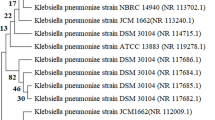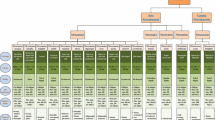Abstract
Seventy-nine strains of bioflocculant-producing bacteria were isolated from 3 activated sludge samples. Among them, strain MYC was found to have the highest and stable flocculating rate for both kaolin clay suspension and oil-field produced water. The bacterial strain was identified as Klebsiella sp. MYC according to its morphological and biochemical characteristics and 16SrDNA sequence. The optimal medium for bioflocculant production by this bacterial strain was composed of cane sugar 20gL−1 KH2PO4 2g L−1, K2HPO45gL−1, (NH4)2SO4 0.2gL−1, urea 0.5 gL−1 and yeast extract 0.5 gL−1, the initial pH being 5.5. When the suspension of kaolin clay was treated with 0.5% of Klebsiella sp. MYC culture broth, the flocculating rate reached more than 90.0% in the presence of 500mgL1 CaCl2, while the flocculating rate for oil-field produced water was near 80.0% in a pH range of 7.0–9.0 with the separation of oil and suspended particles from the oil-field produced water under similar conditions. The environment-friendly nature of the bioflocculant and high flocculating rate of the strain make the bioflocculant produced by Klebsiella sp. MYC an attractive bioflocculant in oil-field produced water treatment.
Similar content being viewed by others
References
Bessa, E., G. L. Sant’ Anna, and M. Dezotti, 2001. Photocatalytic/H2O2 treatment of oil field produced waters. Appl. Cataly B: Environ., 29: 125–134.
Butterfield, C. T., 1935. Studies of sewage purification. II. A zoogloea-forming bacterium isolated from activated sludge. Public Health Rept., 50: 671–684.
Deng, S. B., R. B. Bai, X. M. Hu, and Q. Luo, 2003. Characteristics of a bioflocculant produced by Bacillus mucilaginosus and its use in starch wastewater treatment. Appl. Microbiol. Biotechnol., 60: 588–593.
Dermlim, W., P. Prasertsan, and H. Doelle, 1999. Screening and characterization of bioflocculant produced by isolated Klebsiella sp. Appl. Microbiol. Biotechnol., 52: 698–703.
Dong, X. Z., and M. Y. Cai, 2001. Systematic Determinative Manual of Common Bacteria. Science Press, Beijing, 66–75.
Fujita, M., M. Ike, S. Tachibana, G. Kitada, S. M. Kim, et al., 2000. Characterization of a bioflocculant produced by Citrobacter sp. TKF04 from acetic and propionic acids. J. Biosci. Bioeng., 89: 40–46.
Holt, J. G., N. R. Krieg, P. H. A. Sneath, J. T. Staley, and S. T. Williams, 1994. Bergey’s Manual of Determinative Bacteriology. 9th edition. Williams and Wilkins, Baltimore, 226–228, 235.
Kaewchai, S., and P. Prasertsan, 2002. Screening and application of thermotolerant microorganisms and their flocculant for treatment of palm oil mill effluent. Songk-lanakarinJ. Sci. Technol., 24: 413–420.
Kurane, R., K. Takeda, and T. Suzuki, 1986. Screening for and characteristics of microbial flocculants. Agric. Biol. Chem., 50: 2301–2307.
Kurane, R., and Y. Nohata, 1991. Microbial flocculation of waste liquids and oil emulsion by a bioflocculant from Alcaligenes latus. Agric. Biol. Chem., 5.5: 1127–1129.
Kurane, R., and H. Matsuyama, 1994. Production of a bioflocculant by mixed culture. Biosci. Biotech. Biochem., 58: 1589–1594.
Kwon, G. S., S. H. Moon, S. D. Hong, H. M. Lee, H. S. Kim, et al., 1996. A novel flocculant biopolymer produced by Pestalotiopsis sp. KCTC 8637P. Biotech. Lett., 18: 1459–1464.
Middleditch, B. S., 1984. Ecological Effects of Produced Water Discharges from Offshore Oil and Gas Production Platforms. Final Report on API Project, No. 248. American Petroleum Institute, Washington, D.C, 160pp.
Mo, Z. L., Y. X. Mao, S. Y. Chen, Z. D. Zhang, and P. J. Zhang, 2001. Classification and molecular biological analysis of one pathogenic bacterium associated with hamorrhages of cultured flounder. Chin. High Tech. Lett., 12: 12–17.
Neff, J. M., 1987. Biological effects of drilling fluids, drill cuttings and produced waters. In: Long-Term Environmental Effects of Offshore Oil and Gas Development. Boesch, D. F. and Rabalais N. N., eds., Elsevier Applied Science Publishers, London, 469–538
Rayle, M. F., and M. M. Mulino, 1992. Produced Water Impacts in Louisiana Coastal Waters. Plenum Press, New York, 67–72.
Salehizadeh, H., and S. A. Shojaosadati, 2001. Extracellular biopolymeric flocculants recent trends and biotechnological importance. Biotechnol. Adv., 19: 371–385.
Shimofuruya, H., A. Koide, K. Shirota, T. Tsuji, M. Nakamura, et al., 1996. The production of flocculating substances by Streptomyces griseus. Biosci. Biotech. Biochem., 60: 498–500.
Takadea, M., J. Koizumi, H. Matsuoka, and M. Hikuma, 1992. Factor affecting the activity of protein bioflocculant produced by Nocardia amarae. Ferment. Bioeng., 74: 408–409.
Takagi, H., and K. Kadowaki, 1985. Flocculant production by Paecilomyces sp.: taxonomic studies and culture condition for production. Agric. Biol. Chem., 49: 3151–3157.
Wang, Z., K. X. Wang, Y. M. Xie, and Y. L. Yao, 1995. Studies on bioflocculant-producing microorganisms. Acta Microbiol. Sin., 35: 121–129.
Yokoi, H., O. Natsuda, J. Hirose, S. Hayashi, and Y. Takasaka, 1995. Characteristics of a bio-polymer flocculant produced by Bacillus sp. PY-90. Ferment. Bioeng., 79: 378–380.
Zhang, J. Z., 1990. Microbial Taxonomy. Press of Fudan University, Shanghai, 29–32.
Zou, Q. X., and Z. Y. Lu, 2001. Survey of oil-field waste-water treatment. Ind. Wat. Treat., 21: 1–3.
Author information
Authors and Affiliations
Corresponding author
Rights and permissions
About this article
Cite this article
Yue, L., Ma, C. & Chi, Z. Bioflocculant produced by Klebsiella sp. MYC and its application in the treatment of oil-field produced water. J Ocean Univ. China 5, 333–338 (2006). https://doi.org/10.1007/s11802-006-0025-y
Received:
Accepted:
Issue Date:
DOI: https://doi.org/10.1007/s11802-006-0025-y




